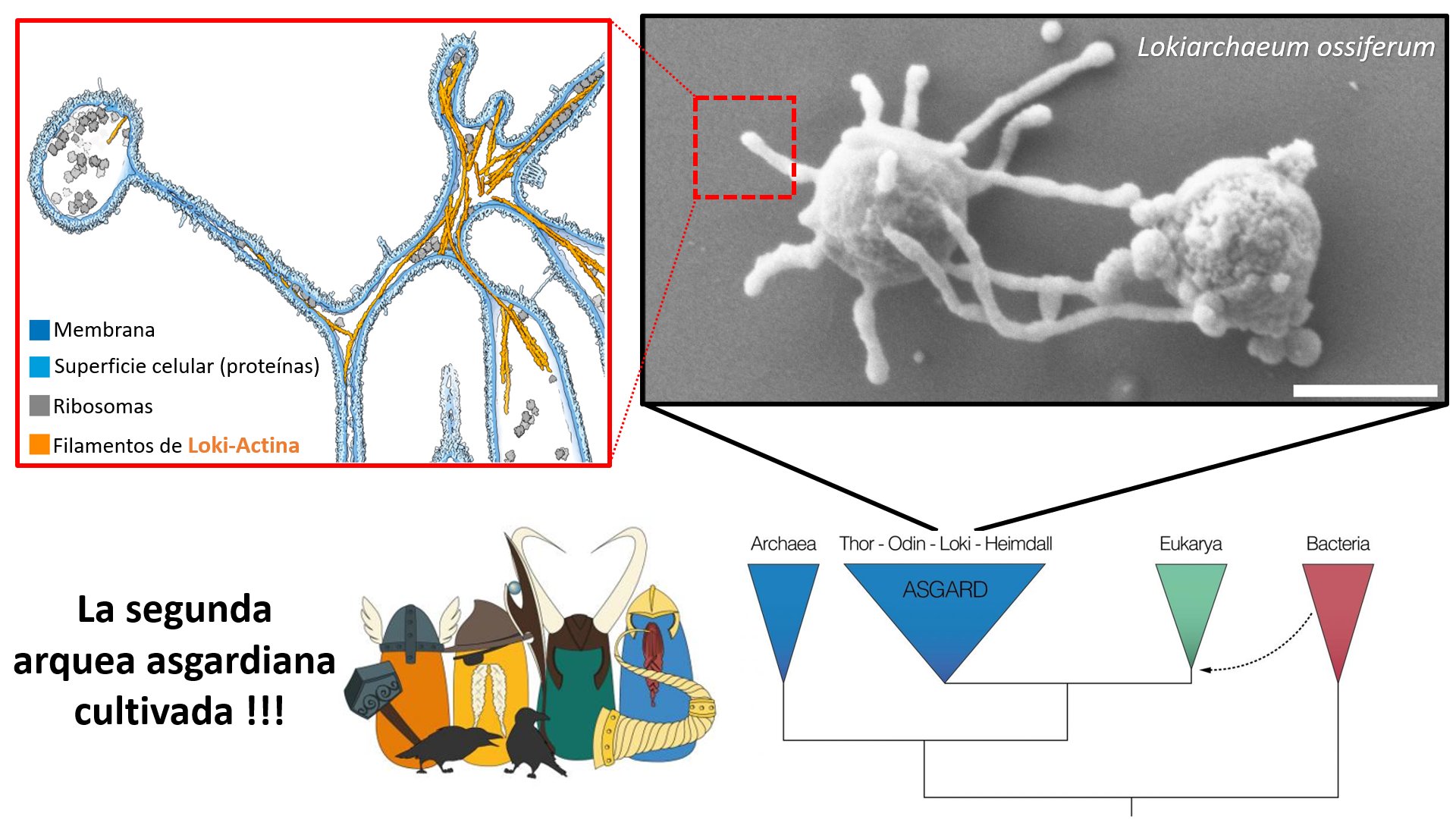Post 9: A new Asgardian archaea! 🎉
Published:
The Asgard archaea represent (so far) one of our best biological models to explain the origin of eukaryotes and are a key group in endosymbiosis theory.
In 2019, Prometheoarchaeum syntrophicum became the first cultivated Asgardian archaeon, and a couple of weeks ago, the second cultivated Asgardian archaeon was reported! It’s called Lokiarchaeum ossiferum.
Lokiarchaeum belongs to the group of Lokiarchaeota, and this time, many cells were able to be cultured for advanced microscopy. Additionally, a very particular protein called loki-actin, which is highly conserved in Lokiarchaeota, was studied. In eukaryotic cells like ours, actin protein is responsible for building the cytoskeleton, and the authors demonstrated that loki-actin has a similar function in Lokiarchaeota, as it forms filaments that allow Lokiarchaeum to have a cytoskeleton. Furthermore, these filaments are the structural support for Lokiarchaeum’s membrane extensions, which allow it to be in close contact with its symbionts and thus be able to grow. It is believed that these extensions may have served as compartmentalization regions where certain cellular processes take place.

Refs:
These results support endosymbiosis models such as the one known as “entangle-engulf-endogenize” that would have allowed eukaryotic cells to emerge billions of years ago.
The paper:Actin cytoskeleton and complex cell architecture in an Asgard archaeon
To learn more: here’s a very good talk by Antonio Lazcano about Asgard archaea
Eat fruits and vegetables, and do not speculate with housing or water.
